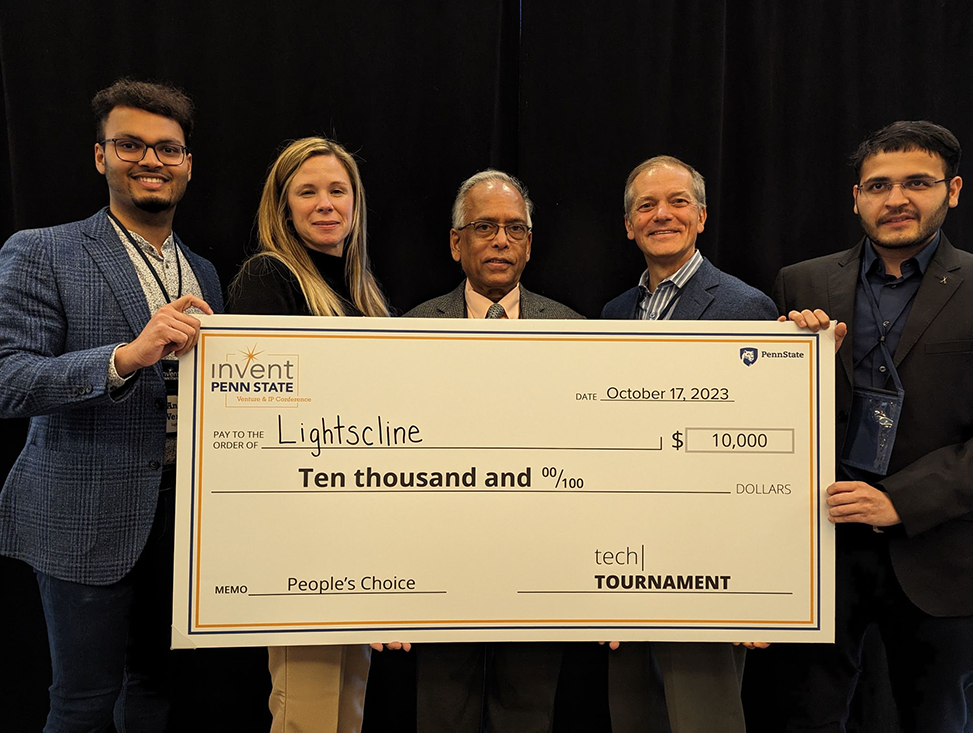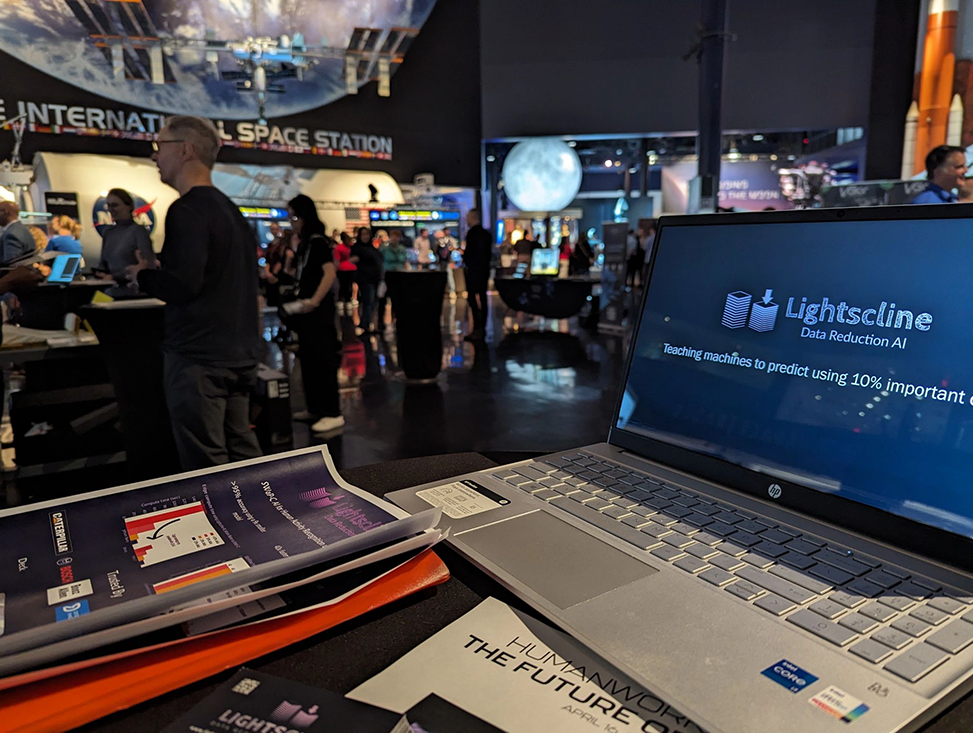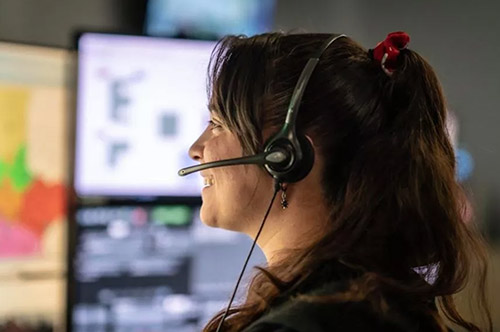By Sarah Taylor
Lightscline, co-founded by Penn State grad students (at the time) and a chair professor, is a Happy Valley company focused on leveraging AI to automatically reduce 90% of sensor data for different downstream tasks, reducing costs and time, and improving efficiency. Lightscline’s unique approach involves compressing data at the collection stage, differentiating the company from its competitors.

The Happy Valley entrepreneurial community, including Penn State and Benjamin Franklin, have been instrumental in supporting the startup, and founder Ankur Verma emphasizes the potential for “Happy Valley” to become “Sensor Valley.”
We spoke with Verma to learn more about the startup’s specifics.
When did you start Lightscline? What is the origin story?
Ankur Verma: Officially, Lightscline started operations in May 2024 with me, Ayush Goyal and Dr. Soundar Kumara as co-founders. I was a PhD student at Penn State, studying industrial engineering from January 2020 to April 2024, and then around 2022, I started to get involved in the entrepreneurial efforts within Penn State. My very initial contact was with Derek Gross, who manages the entrepreneurship office.
In late 2023, we already started to work with Todd Erdley, the Central Regional Director at Ben Franklin, who helped us accelerate our ideas. We attended the Invent Penn State Venture and IP Conference last year. We won People’s Choice there last October. All those things were leading up to Lightscline’s momentum.
Then this year, we were just starting operations, when Benjamin Franklin approved our funding in two stages. I would definitely like to give a special thanks to Todd Erdley, John Sider, Sherry Davidson and Morgan Wagner. They have been very helpful all the way. Another is Elizabeth Hay, who’s the director of Happy Valley LaunchBox. She basically sends us any opportunity, like pitching our connections, so she has also been very helpful.
And lastly, Dan Leri at Innovation Park has been very helpful as well. He, in fact, introduced us to an investor. That would have been very difficult, because [this investor doesn’t] have a lot of public visibility. Dan had the insight that, “yeah, this company is a good fit for that investor,” and it turned out to be a great fit, so they invested in us.
“These three within State College — the Happy Valley LaunchBox, Ben Franklin and Innovation Park — have been very helpful to our success.”
These three within State College — the Happy Valley LaunchBox, Ben Franklin and Innovation Park — have been very helpful to our success.
How has Ben Franklin helped you through the startup process?
Ankur Verma: There’s a very strong component [of] economic development from Ben Franklin, not just from an investment point of view. If you look at grad school at Penn State, a lot of companies come out from researchers who are technological experts, but might not have the skills of a seasoned business executive to go out and raise funding and so on. The people at Ben Franklin know this, especially someone like Todd Erdley, who knows the tech but then also who has that vision.
I think that this piece of information was very helpful to us initially, because at that point we were still focused a bit more on the tech itself, but Todd helped us think more of the financial side. He brought in some relevant connections. At the earliest stages, there is a very specific type of expertise needed. I don’t think any normal investor can bring that, because you have had to have done that yourself.
Ben Franklin helped us to think about, if you have a pitch deck, then how do you change it for a customer? How do you change it for an investor? What material is appropriate? Todd Erdley has been involved in a lot of our customer conversations. It’s these things that maybe don’t seem that important that are really vital to the success of the company.
“And I say it this way: For a small business with two, three people, every good meeting can land a new opportunity, and Ben Franklin helped us have good meetings.”
And I say it this way: For a small business with two, three people, every good meeting can land a new opportunity, and Ben Franklin helped us have good meetings.
Why now? Why is this the right time for Lightscline?
Ankur Verma: All of this arose from a problem that we were solving. The problem was that we had different sensors deployed in places, from your cars to your smartphone, and we were doing a simple project of collecting all this data and then sending it to a cloud in order to store that data. But some of these sensors can generate such high volumes of data that it’s difficult to deal with.
We had a realization surrounding the specific difficulties that prevent you from very easily streaming all of that data into a database. Bandwidth can be restricted in environments, for example, where you have wind turbines or remote mines. Secondly, database storing, cloud computing — all those things cost a lot.
“This is a problem which many industries will be facing as they start this digitization effort of incorporating more miniature sensors. Since this is the case, if we can provide them with the same analytics, but with 100x less data points, it means that we could potentially save them a lot of cost and even enable new applications, which are not even possible today.”
Then we had two insights. One insight was that this is a problem which many industries will be facing as they start this digitization effort of incorporating more miniature sensors. Since this is the case, if we can provide them with the same analytics, but with 100x less data points, it means that we could potentially save them a lot of cost and even enable new applications, which are not even possible today.
The idea was born. Once we solved this problem, we wanted to try to see if we could solve this for other people and that really was the foundation behind Lightscline.
Because even today, when we tell some of these things to our customers, they are like, yeah, we can see this happening in the near future. It’s almost like we need to be two, three years ahead of the curve, which is where we are at. And that is also dictating what type of customers we are trying to speak with, especially the ones in satellites, space or wearables markets.

What makes you stand out from other competitors in your field?
Ankur Verma: Right now, everyone is taking all of the data — let’s say 100 gigabytes of data — and then compressing it into one gigabyte of data. But, we are actually taking the idea of compression back to the collection stage itself. So we are saying that you don’t even need to collect that 100 gigabytes of data.
Our AI techniques can actually collect that one GB of your client’s subsample data so that you don’t even have to collect all of that 100 gigabytes of data.
So, think about it traditionally. You have this 100 GB, and then the pipe goes and you make it 10 GB. But there is a lot of effort involved with that. What we are seeing is you can actually just start with this one GB and just process that one GB. You don’t even need that 100 GB.
Since every additional GB of data is roughly 40 hours of analysis for a data scientist, if [the data scientist] doesn’t have to do that extra analysis without sacrificing any performance, it’s a big deal.
How did the Happy Valley community support your endeavors?
Ankur Verma: I started Lightscline here because I did my PhD at Penn State, but then I came to know about the resources available here. But that being said, [the community] has helped. We are deep tech focused, based on heavy science and research. You need specific expertise for this. Individuals like Dan Leri and Elizabeth Hay, and even the office of Technology Management at Penn State, have been very appreciated. Since Penn State focuses on the science aspect and Benjamin Franklin deals with researchers who want to commercialize their technology, they have the expertise in how to deal with companies like us.
Why have you stayed in the Happy Valley community?
Ankur Verma: Recently, there has been a push towards “Sensor Valley.” The CBICC is starting to call Happy Valley, “Sensor Valley”, because there is a concentration of companies related to different levels across the sensor field, from manufacturing the hardware itself to packaging. We stand almost at the top of that layer, which is analyzing the data.
“Happy Valley becoming “Sensor Valley” should attract even more companies, and I think that is probably the strongest reason for us to stay here.”
I think that the cluster is definitely helpful, because it’s easier to talk with someone if they already know the language we share. Happy Valley becoming “Sensor Valley” should attract even more companies, and I think that is probably the strongest reason for us to stay here.
Learn more about Lightscline.







